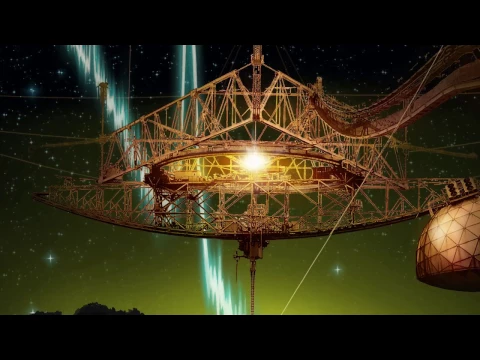Astronomers – among them scientists from ASTRON, University of Amsterdam, Leiden University and JIVE in the Netherlands – have for the first time pinpointed the location of a so-called ‘fast radio burst’ – a type of short-duration radio flash of enigmatic origin – and have used this to identify its host galaxy. The team presented their findings at the American Astronomical Society’s winter meeting in Grapevine, Texas. The results appear today in Nature and the Astrophysical Journal Letters.
Published by the editorial team, 4 January 2017
Prior to this discovery, astronomers have lacked the definitive proof that fast radio bursts (FRBs) come from far outside our Milky Way galaxy, because poor localization has prevented them from uniquely identifying their galaxy of origin. The new finding is critical because it has also allowed astronomers to precisely measure the distance to the extragalactic source, and hence how much energy it is producing.
FRBs are visible for only a fraction of a second, and have puzzled astronomers for over a decade since they were first discovered. Precise localization of an FRB requires radio telescopes separated by large distances, which allow high resolution images to be made when these telescopes are used in combination with each other.
On Aug 23 2016, the Karl G. Jansky Very Large Array in New Mexico first detected a radio burst from the only known repeating FRB, named FRB 121102. This determined its sky position to a fraction of an arcsecond. “Near this position, our team found both steady radio and optical sources, which arguably pointed the way to the galaxy hosting the FRB,” says first author Shami Chatterjee (Cornell).
The team wanted to zoom-in even further, so they used the Arecibo Observatory and the European VLBI Network (EVN), which links telescopes spread across the world, to localize the position by another factor of 10 more precision. “With this level of precision, we have strong evidence that the source of the bursts is physically related to whatever is producing the persistent radio emission,” says Benito Marcote (JIVE). “It is the combined sensitivity of EVN telescopes, their large separation and the unique capabilities of the EVN central data processor at JIVE that allow for pinpointing events that are as short as a thousandth of a second, with a sky position accuracy of about 10 milli-arcseconds, which is similar to the apparent size of a tennis ball in New York, seen from Dwingeloo,” adds Zsolt Paragi (JIVE).
The team used one of the world’s largest optical telescopes, the 8-m Gemini North on Mauna Kea in Hawaii, to discover that the bursts originate from a host galaxy, and use its measured spectrum to obtain a so-called ‘redshift’, which places the source at a whopping distance of over 3 billion light-years. “This gives us incontrovertible confirmation that this FRB originates very deep in extragalactic space,” says co-author Cees Bassa (ASTRON). Though the mystery of the FRB’s distance is now solved, astronomers have a new puzzle on their hands. The galaxy hosting the FRB is surprisingly small – a so-called dwarf galaxy. “We were not sure what to expect, but I think the whole team was surprised to see that our exotic source is hosted by a very puny and faint galaxy,” Bassa adds.
The fact that FRB 121102 is located in a dwarf galaxy may be a vital clue to its physical nature. Such galaxies contain gas that is relatively pristine compared to that found in the Milky Way. “The conditions in this dwarf galaxy are such that it may be possible to form much more massive stars than in the Milky Way, and perhaps the source of the FRB bursts is from the collapsed remnant of such a star”, suggests co-author Jason Hessels (ASTRON, University of Amsterdam). Alternatively, astronomers are considering a very different hypothesis in which the FRBs are generated in the vicinity of a massive black hole that is swallowing surrounding gas.
To try and differentiate between these two scenarios, astronomers are using the world’s premier radio, optical, X-ray and gamma-ray telescopes. Hessels: “For example, if we can use the Arecibo telescope to find a periodicity in the arrival times of the bursts, then we will have strong evidence that it originates from a rotating neutron star.”
Deciphering the origin of the FRBs will also depend on localizing more such sources, and astronomers are debating whether all FRBs detected to date are of a similar physical origin or whether there are multiple types.
